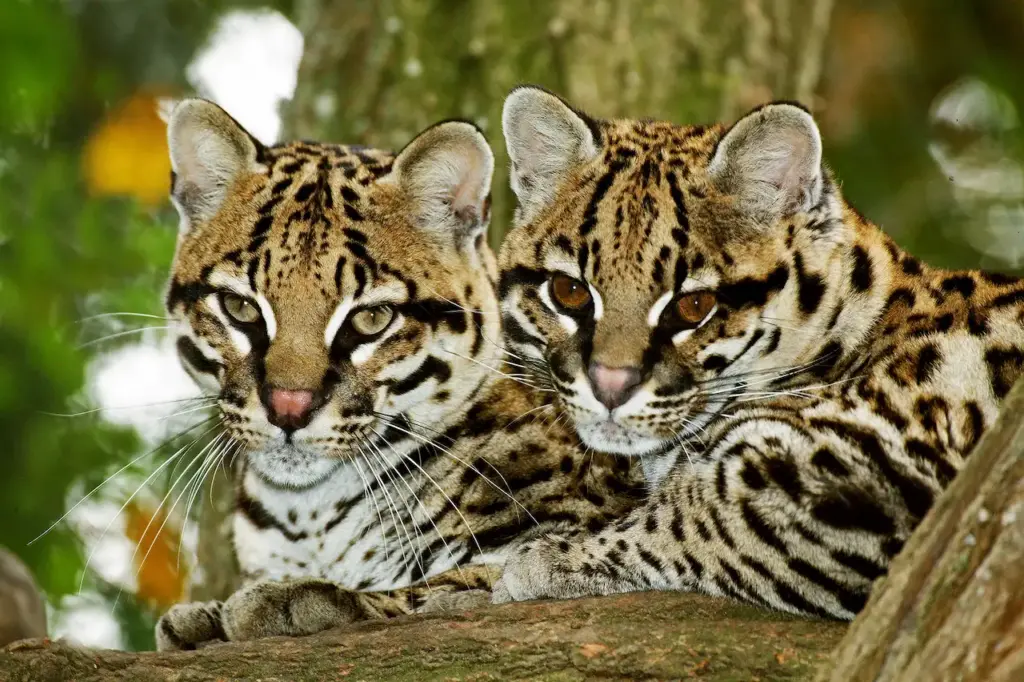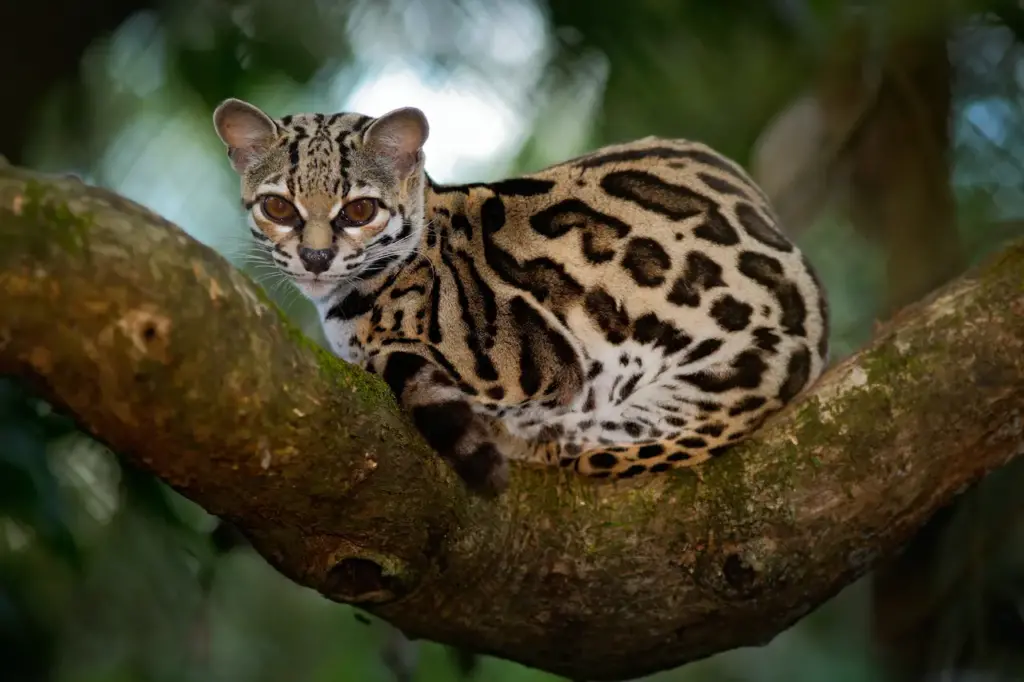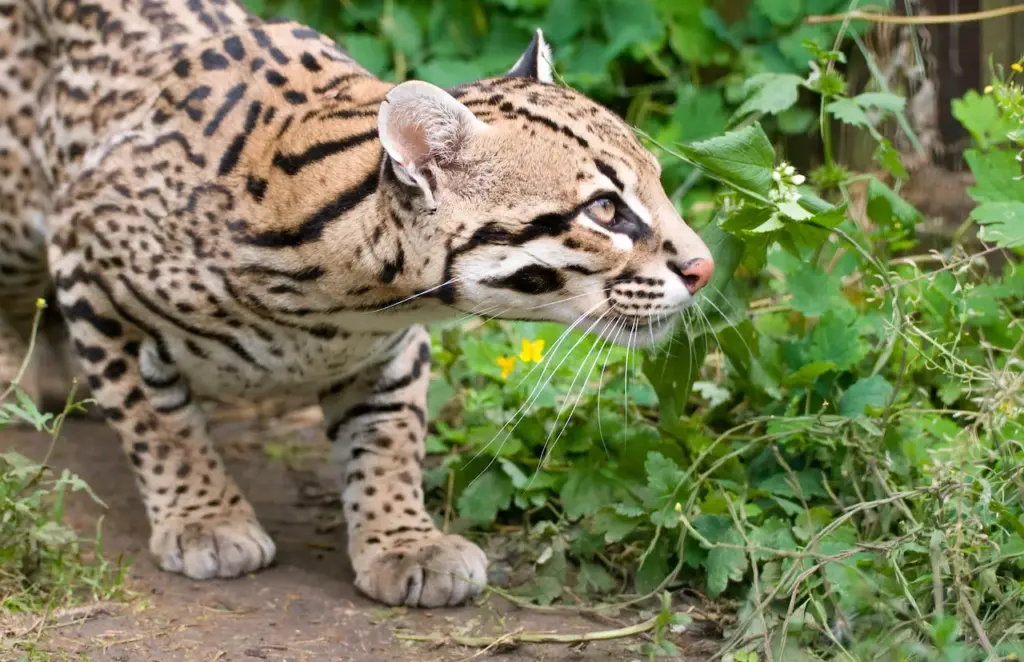What Eats Ocelots?
Categories
- Accipitridae (1)
- Acrididae (1)
- Algae (2)
- Alligatoridae (1)
- Amoebidae (1)
- Amphibians (3)
- Anatidae (1)
- Anguillidae (1)
- Arachnids (2)
- Bears (2)
- Big Cats (3)
- Birds (13)
- Bovidae (5)
- Bufonidae (1)
- Camelids (1)
- Cameras (1)
- Canines (13)
- Caridea (1)
- Carnivora (10)
- Castoridae (1)
- Cats (5)
- Cebidae (1)
- Cephalopod (1)
- Cervidae (2)
- Cetacean (1)
- Chondrichthyes (1)
- Crocodilia (2)
- Crustaceans (4)
- Culicidae (1)
- Cyaneidae (1)
- Dasypodidae (1)
- Dasyurids (1)
- Deer (1)
- Delphinidae (1)
- Desktop (1)
- Didelphidae (1)
- Dinosaurs (1)
- Dogs (13)
- Dolphins (2)
- Echinoderms (1)
- Education (10)
- Elephantidae (1)
- Equine (1)
- Erethizontidae (1)
- Erinaceidae (1)
- Farming (1)
- Felidae (5)
- Fish (5)
- Food Chain (31)
- Food Web (2)
- Formicidae (1)
- Frugivore (1)
- Gaming (1)
- Gastropods (1)
- Giraffids (1)
- Great Apes (2)
- Health Conditions (3)
- Herbivore (4)
- Hi-Fi (1)
- Hippopotamidae (1)
- Hominidae (1)
- Insects (10)
- Invertebrates (2)
- Keyboards (1)
- Laptops (1)
- Leporidae (1)
- Mammals (23)
- Marsupials (4)
- Mephitidae (1)
- Microchiroptera (1)
- Mollusks (2)
- Mongoose (1)
- Muridae (1)
- Nocturnal Animals (1)
- Odobenidae (1)
- Omnivore (2)
- Phasianidae (1)
- Phocidae (1)
- Plankton (1)
- Plants (2)
- Primate (1)
- Ranidae (1)
- Reptiles (7)
- Rhinocerotidae (1)
- Rodents (5)
- Salamandridae (1)
- Scarabaeidae (1)
- Sciuridae (2)
- Sharks (1)
- Shellfish (1)
- Sound (1)
- Spheniscidae (1)
- Suidae (1)
- Superfamily Papilionoidea (1)
- Theraphosidae (1)
- What Eats (5)
The elusive ocelot is an endangered rainforest cat stealthily roaming Central and South American jungles from Texas to Argentina. Though exquisitely adapted as a solitary nocturnal hunter of birds, mammals, and reptiles, these cats now face escalating perils.
Expanding deforestation and illegal wildlife trade have critically threatened ocelot numbers while vanishing forests increasingly force deadly contact with opportunistic snake, raptor, and jaguar predators too. If preserved rainforest connectivity can be restored in time, this alluring cat species stands a chance of enduring alongside the entire symphony of other endemic Neotropical wildlife.
Table of Contents
Toggle
Pair Of Adult Ocelots, What Eats Ocelots?
Constrictor Snakes
Herpetologists have gathered mounting evidence that most successful ocelot predation transpires near waterways and seasonally flooded forests, primarily executed by big non-venomous snakes like boas and pythons stealthily hunting the rainforest floor and sub-canopy.
These patient ambush hunters passively lie camouflaged for hours, waiting to strike mammals approaching water banks to drink and feed. Heavy-bodied boas like rainbow boas up to 2 meters long can readily swallow smaller ocelot kittens and juveniles whole, while only the largest individual snakes exceeding 5 meters (15 feet) can dislocate their flexible jaws wide enough to ingest an adult ocelot whole.
Herpetologists have retrieved the radio collar tags from mature ocelots deep inside the stomachs of captured boas, proving these efficient constrictors regularly prey upon grown ocelots and not just the more vulnerable younger felines.
Similarly, arboreal green anacondas and reticulated pythons lurk hidden amongst branches overhanging forest streams, ready to drop several meters down instantly upon thirsty mammals gathered below. Treading near water forests and riparian edges warrants ample caution for ocelots to avoid surprise serpentine ambushes.
Big Cats
Researchers have confirmed that formidable interspecies competition also acutely threatens ocelots, mainly from larger and more powerful felines like jaguars, pumas, and jaguarundis, frequently sharing the same Neotropical forest hunting grounds and prey preferences.
When simultaneously inhabiting directly overlapping prime territories with an apex predator like the jaguar, for instance, inevitable conflicts over prey often arise to the significant detriment of the far smaller ocelot. Remote camera traps set up by field biologists have regularly captured violent altercations erupting between jaguars and ocelots fiercely competing over possession of a fresh monkey or peccary kill in a disputed domain.
Eagles & Other Raptors
The rampant clearing of immense swathes of virgin tropical rainforest for conversion into soybean fields, cattle ranches, and oil palm plantations increasingly robs ocelots of their naturally protective dense forest canopy shield against aerial predators.

Ocelot Cat Sitiing What Eats Ocelot
Losing this concealed canopy cover suddenly enables formidable large raptor birds like harpy eagles, crested eagles, and ornate hawk-eagles nesting within trees along meandering rainforest rivers renewed access to ocelots now hideously overexposed in foreign open terrain.
Multiple documented cases exist of radio-collared remains of mature adult ocelots retrieved deep inside the arboreal nests of various eagle and hawk species strategically situated along degraded forest waterways.
Coyotes
The ongoing destruction of virgin rainforests across Central and South America insidiously causes expanding patches of degraded former forests overtaken by sprawling scrubland and grasslands—terrain now favorable for the alarming infiltration of coyotes from North America into these regions.
As highly adaptive habitat generalists boasting a broadly varied opportunistic diet, coyotes exploit these new tropical landscapes, teeming relatively rapidly with smaller displaced forest mammals like rodents and opossums—the original core prey base of resident ocelots.
Yet limited resources intensify inevitable conflict and competition between territorial resident ocelots staunchly defending their shrinking habitats against the onslaught of these invasive coyotes now openly vying for the same prey and territory while threatening the endemic spotted wild cats.
Other Latin American Predators
Beyond the above primary creatures, herpetologists and field biologists have confirmed an array of additional opportunistic predators that will prey upon ocelots when presented with periodic chances under favourable circumstances.
These sporadic hunters include cream-coloured crab-eating foxes, tayras, martens, tropical rattlesnakes, bushmasters, emerald tree boas, spectacled caiman crocodilians related to alligators, and smaller raptors like ornate hawk-eagles possessing powerful talons enabling them to lift prey to four kilograms—sufficient to snatch up vulnerable ocelot kittens.
Researchers concur that most successful land attacks require mainly luck in encountering primarily either very young juvenile ocelots or infirm, compromised individuals with diminished senses and mobility. Healthy, alert adult ocelots have evolved to proactively avoid confrontation with most opportunist predators through stealth, vigilance, speed, and physical capacity—having survived precisely by eluding these predators since infancy.
Vulnerabilities: Old, Young & Injured
In summary, although mature ocelots have adapted through natural selection to develop sufficient defences protecting against most predators, exceptions exist that contribute to ongoing attrition.
The two most vulnerable demographics remain 1) Very young kittens still denning and 2) Elderly aging ocelots with fading vision, dulled reactions, and limited mobility.
Remote camera traps often document cases of opportunistic snakes and mid-sized mammals ambushing unattended hidden dens to prey upon helpless kittens while mother ocelots are away hunting.
And preceding demise, geriatric ocelots are no longer able to effectively hunt traditional arboreal fare like monkeys and sloths are forced to target terrestrial prey, thereby increasingly vulnerable to ambush by snakes and other ground predators.
Occasionally, mature ocelots wounded by porcupine quills, vehicle collisions, or wire snares set by ranchers also face an enhanced risk of falling prey if debilitated by injury or infection. These cases enable even smaller predators to exploit vulnerable, compromised ocelots.

Peering Ocelot What Eats Ocelot
Apex Predators & Climate Change
However, the unprecedented ongoing razing of the majority of Latin America’s once-expansive rainforests for conversion into soybean fields and cattle pastures largely fuels the most destructive external threats endangering ocelots across their native Neotropical range both in Central and South America.
This extensive habitat destruction indirectly disadvantages ocelots and smaller felines by enabling previous complete large predator avoidance. Historic primitive rainforest environments provided adequate space and niche partitioning, allowing multiple larger predators like 200-pound jaguars, pumas, eagles, and jaguars to coexist alongside 15-pound ocelots without much interaction or competition.
Conservation Actions Needed
Many wildlife conservationists argue the most truly meaningful tactic for promoting long-term ocelot population viability entails immediately curtailing further agricultural and ranching conversion of remaining old-growth rainforest habitats across Latin America.
Preserving adequate natural wilderness buffers and connectivity between protected nature sanctuaries offers the best outlook for endangered endemic species like ocelots. Urgent habitat preservation provides resilience against rising temperatures, enabling northerly species like coyotes to invade previously cooler rainforests.
Saving critical corridors for migration, breeding, and dispersal can sustainably maintain separation between large competing feline predators like jaguars and smaller ocelots. Maintaining neonatal denning niches facilitates early rearing success. Aside from staunching imminent habitat losses threatening extinction, increased ranger patrol can suppress rampant poaching for the illegal exotic pet trade and minimize retaliatory killings by angry farmers blaming ocelots for occasional domestic animal losses.
The fate of the ocelot now depends directly on urgent sociopolitical willpower to intervene to protect the remaining intact wilderness ecosystems favourable to this alluring, diminutive spotted feline.
Conclusion
Ocelots face escalating threats as deforestation strips their native Latin rainforest habitats, forcing deadly contact with larger jaguar and puma competitors, giant snakes, and aerial raptors. Expanding habitat destruction also enables invasive coyotes to infiltrate former forest strongholds.
While mature ocelots can evade endemic predators, unprecedented habitat loss increasingly overwhelms survival adaptations amid dwindling territory and prey. With climate change magnifying invasion, the alluring ocelot’s fate now hinges on preserving remaining rainforests to maintain ecological balance, enabling fragile endemic species to withstand swelling human pressures.
